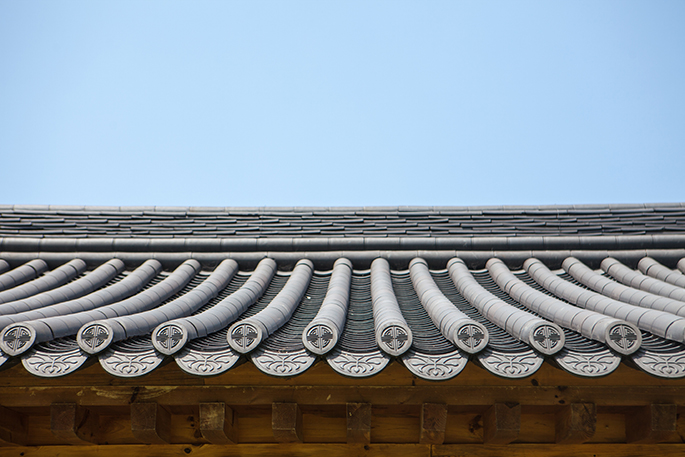
A regular survey of designated cultural assets, such as monuments and cultural asset materials, within the province
Research, the GyeongGi Institute of Cultural Properties
Gyeonggi-do, the GyeongGi Institute of Cultural Properties, Gyeonggi cultural assets, Gyeonggi culture, cultural assets, traditional culture, cultural assets, designated cultural assets, memorials, cultural assets materials, onsite surveys, Gyeonggi cultural assets
○ Regular survey of 201 cultural assets, designated by the province
– Status and change of status for conservation management, deterioration, level of damage, disaster-prevention facilities and all other management statuses
○ This is to contribute to the establishment of historical and cultural identity by collaborating with 31 cities and counties, conserving and transferring forward the values of cultural assets.
Gyeonggi-do and the GyeongGi Institute of Cultural Properties carry out regular surveys covering the general conditions, and the status and management of memorials and cultural asset materials. Gyeonggi-do’s designated cultural asset system is designed to protect ‘the subjects of high historical, artistic, academic and landscape values’ among existing provincial cultural assets such as monuments, tangible and intangible cultural assets and cultural assets.
In 2015, the province surveyed through the country’s professional organization, the GyeongGi Institute of Cultural Properties, for the first time in the country. The survey included additional designated cultural assets and their changes. Subjected to the survey is included 183 monuments in 31 cities and counties and 18 cultural asset materials, totaling 201 designated cultural assets. The survey will be carried out until the end of this year.
The contents of the survey include: ▲Literature and photographs about history of cultural assets ▲Contents of the survey at the point of designation ▲Excavation ▲Status of maintenance and repair ▲Status of conservation and management ▲Signposts ▲Introduction facilities, such as direction boards ▲Status of management of the surroundings ▲Internet map and status of guidance through navigation.
The onsite survey will be conducted between March and July by related professionals. The overall survey covers the status and change of conservation conditions, deterioration, damage and disaster-preventive facilities, and there will be a review of the suitability of cultural assets and protected areas. The results will be sent to cities and counties to establish methods to protect cultural assets, ensure prioritization of repair and maintenance and improve problems in terms of fire-prevention and safety of cultural assets. The results will be used to secure necessary project budgets. Also, based on accumulation of long-term survey results, advanced prevention systems will be established. At the same time, the results will be used to establish mid and long-term plans.
A provincial source said, “Based on regular surveys, we will establish our identity and increase the pride of people of Gyeonggi-do by conserving and transferring cultural assets.”
Research, the GyeongGi Institute of Cultural Properties
Gyeonggi-do, the GyeongGi Institute of Cultural Properties, Gyeonggi cultural assets, Gyeonggi culture, cultural assets, traditional culture, cultural assets, designated cultural assets, memorials, cultural assets materials, onsite surveys, Gyeonggi cultural assets
○ Regular survey of 201 cultural assets, designated by the province
– Status and change of status for conservation management, deterioration, level of damage, disaster-prevention facilities and all other management statuses
○ This is to contribute to the establishment of historical and cultural identity by collaborating with 31 cities and counties, conserving and transferring forward the values of cultural assets.
Gyeonggi-do and the GyeongGi Institute of Cultural Properties carry out regular surveys covering the general conditions, and the status and management of memorials and cultural asset materials. Gyeonggi-do’s designated cultural asset system is designed to protect ‘the subjects of high historical, artistic, academic and landscape values’ among existing provincial cultural assets such as monuments, tangible and intangible cultural assets and cultural assets.
In 2015, the province surveyed through the country’s professional organization, the GyeongGi Institute of Cultural Properties, for the first time in the country. The survey included additional designated cultural assets and their changes. Subjected to the survey is included 183 monuments in 31 cities and counties and 18 cultural asset materials, totaling 201 designated cultural assets. The survey will be carried out until the end of this year.
The contents of the survey include: ▲Literature and photographs about history of cultural assets ▲Contents of the survey at the point of designation ▲Excavation ▲Status of maintenance and repair ▲Status of conservation and management ▲Signposts ▲Introduction facilities, such as direction boards ▲Status of management of the surroundings ▲Internet map and status of guidance through navigation.
The onsite survey will be conducted between March and July by related professionals. The overall survey covers the status and change of conservation conditions, deterioration, damage and disaster-preventive facilities, and there will be a review of the suitability of cultural assets and protected areas. The results will be sent to cities and counties to establish methods to protect cultural assets, ensure prioritization of repair and maintenance and improve problems in terms of fire-prevention and safety of cultural assets. The results will be used to secure necessary project budgets. Also, based on accumulation of long-term survey results, advanced prevention systems will be established. At the same time, the results will be used to establish mid and long-term plans.
A provincial source said, “Based on regular surveys, we will establish our identity and increase the pride of people of Gyeonggi-do by conserving and transferring cultural assets.”

